Jul 31, 2017
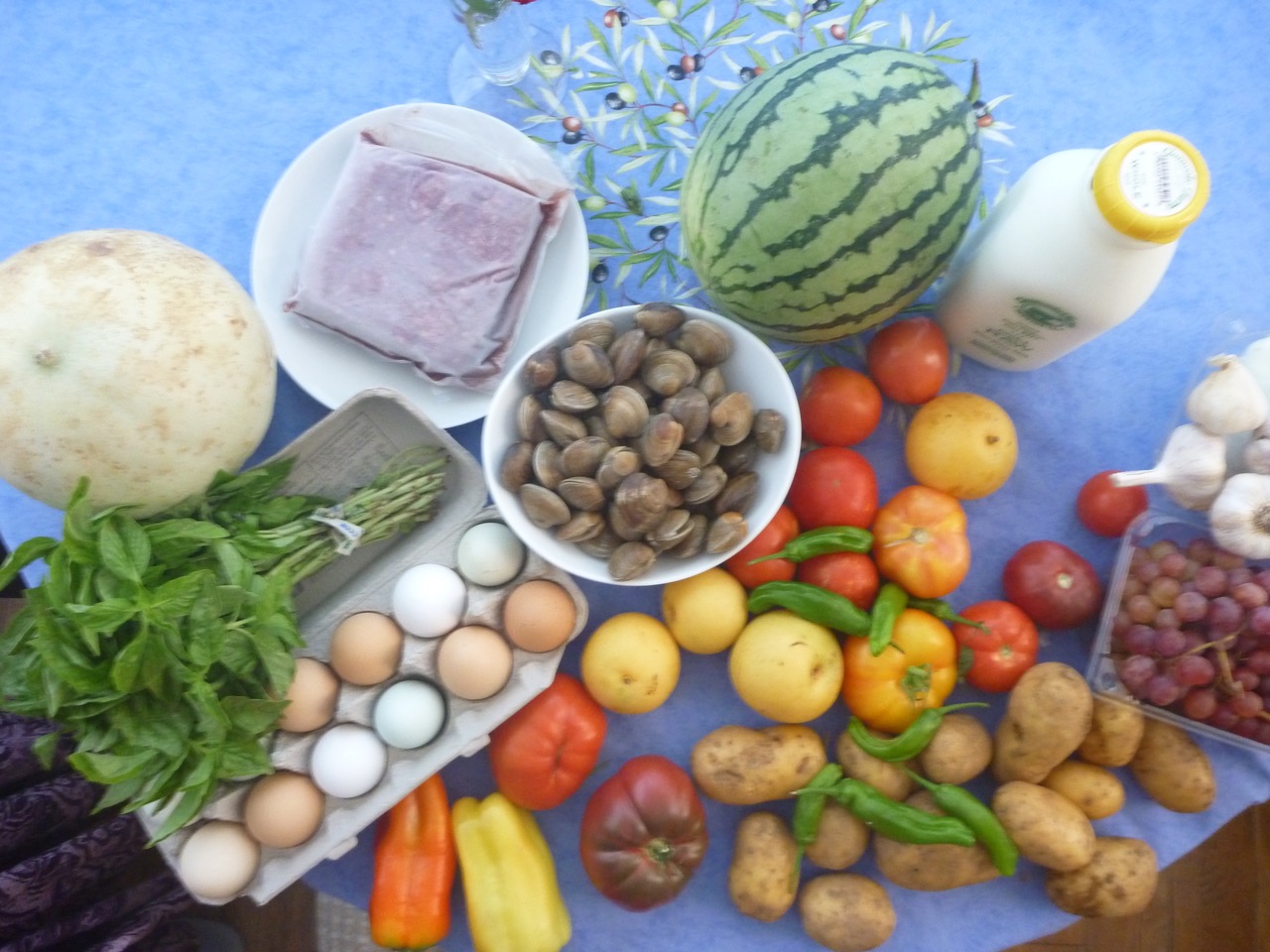
A sample of produce and seafood available from CSAs that deliver to Solano County.
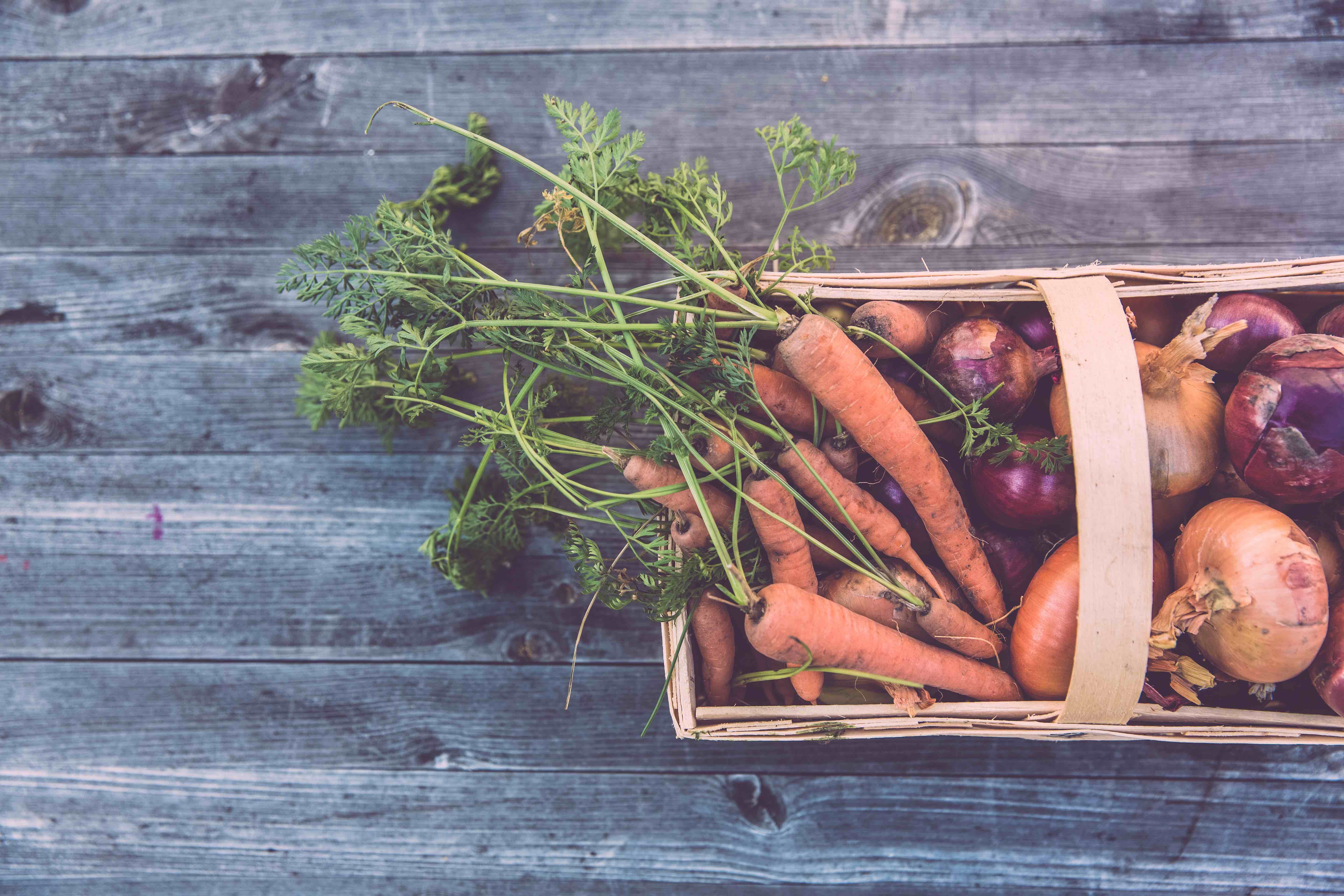

Nothing compares to biting into a fresh-off-the-vine summer tomato or enjoying a slice of pie made with apples right from the tree. There is no debate that fresh-picked produce is superior in taste compared to the chain supermarket equals that are on display under bright lights, losing flavor by the minute. Fortunately, Solano County is surrounded by agriculturally-rich land and offers many options for getting fresher, more nutritious foods on to your dinner plates.
If you are limited on growing space you can join your local community garden or community orchard and enjoy the fruits of your own labor- literally. Farmers’ markets fill downtown areas every year with foods produced by local growers and are a great way to support and honor the hard work of small-scale farmers.
Not everyone, however, has the capacity or time to invest in growing their food or making it down on market days to shop for the week. Community Supported Agriculture (CSA) allows you to conveniently receive farm fresh foods, often harvested within 24 hours, delivered directly to your home or you may pick up your box at a drop location right your own city. When you join a CSA, you commit to buying a share of the seasonal harvest up front and receive a weekly delivery of fresh produce, meats, dairy and other specialty goods throughout the growing season. CSAs help to strengthen the relationship between the farmers that grow your fruits and vegetables and you.
There are many opportunities to support local producers and growers but still only a small number of Americans are buying food directly from local food avenues. We seem to have lost our connection between the people who grow our food and the land that sustains through chain grocery shopping. By supporting local farmers, you keep your dollars closer to your local food system, helping transform the local economy. The reality is that for every food dollar spent, only 20 cents goes directly back to the farmer who grew the food- the remainder going to transportation. When you buy local, you support a more sustainable and environmentally conscious method of food delivery by eliminating the need for farmers to spend on fuel-guzzling transportation, packaging and energy use for transportation.
Here are only a few benefits to joining a local CSA:
- CSAs produce a much greater variety of produce than what you find at local supermarkets.
- You get exposed to new fruits and vegetables and new ways of cooking. Often included in your box are recipe cards with information for preparing and storing your items as well as nutritional facts.
- You are often getting produce picked within 24 hours of arriving to your doorstep so produce is fresh, ripe, and never frozen for best taste.
- Many CSAs offer farm tours where you can meet the people who grow your food, learn sustainable agriculture and see how your food is grown.
- The money you spend goes right back to the food you eat and into sustaining the operations of the farm you are a member of.
Check out the list of CSA’s that delivery in your area and start receiving nutritious, delicious, farm-fresh foods grow by a local farmer!
| CSA |
Delivery and Drop Locations |
|
| Lockewood Acres
Organic farm providing vegetables, fruit, eggs, meat and honey to Vacaville and surrounding areas. |
Direct farm pick-up or at
Vacaville Farmer’s Market |
|
| Siren Fish Company
Providing sustainably harvested California seafood |
Drop location in Benicia
Drop location in Vallejo. |
|
| Terra Firma Farm
Certified organic year-round vegetables, fruits and nuts grown locally in Solano and Yolo County |
Drop locations in Benicia and Vacaville |
|
| Real Food Bay Area
Providing healthy, nutrient dense, sustainable, fresh and prepared foods. |
Drop location in Benicia |
|
| Eat Well
High-quality, fresh produce, dairy and other specialty goods |
Drop location in Vallejo and Vacaville |
|
| Tara Firma Farm
Pasture raised beef, pork, chicken,lamb, and turkey. Organic fruit, eggs, cheese, and vegetables. |
Offering home delivery anywhere in California!
Drop location in Benicia. |
|
| Azure
Natural and organic food distributer delivering more than 14,000 non-GMO and organic local and non-local products direct to families. |
Drop location in Benicia |
|
Jul 31, 2017
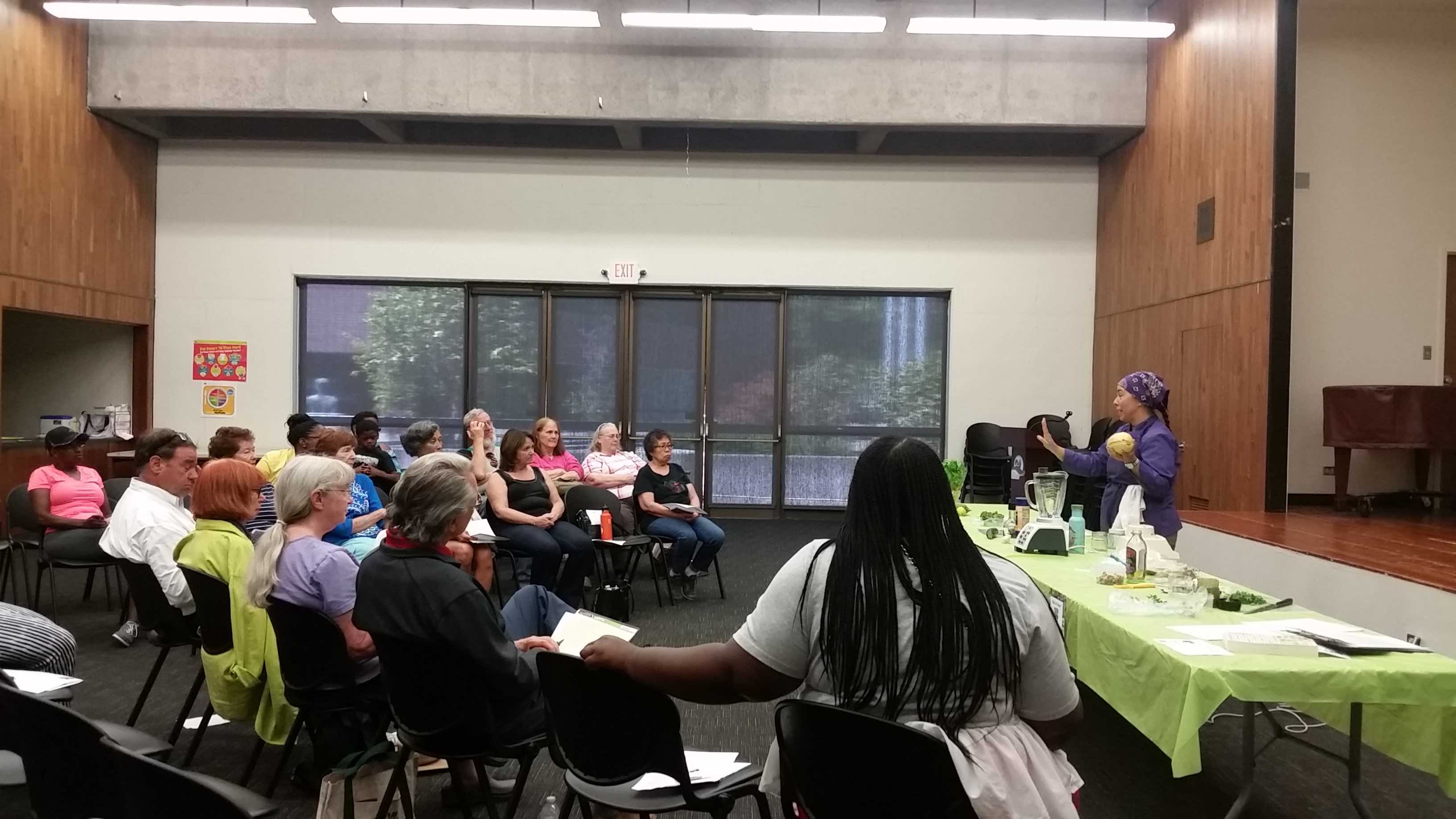
We had a full house on July 29th at John. F. Kennedy Library with over 20 people attending to hear Chef Lisa Núñez-Hancock teach about how to make classic pesto, other variations of the sauce, and how to use various types of squash as a healthy alternative for pasta.
Chef Lisa is founder of UR what U eat (workshops focused on a farm-to-table cooking philosophy and nutrition), a culinary arts instructor, natural food chef and food activist. She began class with a brief introduction on the Italian origins of traditional pesto sauce and being an enthusiast for healthy eating, dove into the nutritional and medicinal benefits of the basic ingredients. The most common pesto recipe consists of crushed garlic, basil and pine nuts blended with Parmesan cheese and olive oil. “Basil happens to be an anti-inflammatory and anti-bacterial food that can help reduce inflammation in the body,” Chef Lisa imparted. Other nut variations, such as walnuts and cashews, may be used to create unique and flavorful pestos. Nuts are loaded with heart-healthy fats that aid in increasing good cholesterol.
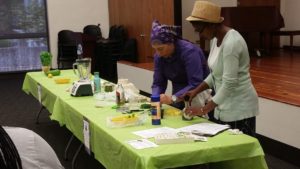 An enthusiastic teen was invited up to assist Chef Lisa in prepping the ingredients for her tasting samples that were later distributed and enjoyed. There was discussion on different leafy green varieties that can also be used to achieve equally delicious pesto sauces like spinach, arugula and even broccoli to name a few. The workshop closed with a quick raffle draw where winners took home some exciting veggie prizes such as a bright yellow spaghetti squash to begin experimenting replacing pasta for a lighter summer meal.
An enthusiastic teen was invited up to assist Chef Lisa in prepping the ingredients for her tasting samples that were later distributed and enjoyed. There was discussion on different leafy green varieties that can also be used to achieve equally delicious pesto sauces like spinach, arugula and even broccoli to name a few. The workshop closed with a quick raffle draw where winners took home some exciting veggie prizes such as a bright yellow spaghetti squash to begin experimenting replacing pasta for a lighter summer meal.
This conscious eating workshop series includes a book group that meets four times per year to discuss books relevant to healthy eating and the local food movement. Participants were able to get a sneak peak at the next book that will be discussed at our next summer book group meeting on Wednesday, August 30th called “What to EAT” by Marion Nestle. This book guides you through the supermarket, aisle by aisle, to help you make healthy, informed choices about food.
Workshop hosted by the John F. Kennedy library and in partnership with Sustainable Solano and UR what U eat.
The next seasonal cooking workshop for fall will be Saturday, September 16th where Chef Lisa Nuñez-Hancock will cover how to preserve vegetables and fruits. You will learn how to brine and ferment vegetables and how to make healthy, naturally sweetened fruit spreads.
Jul 5, 2017
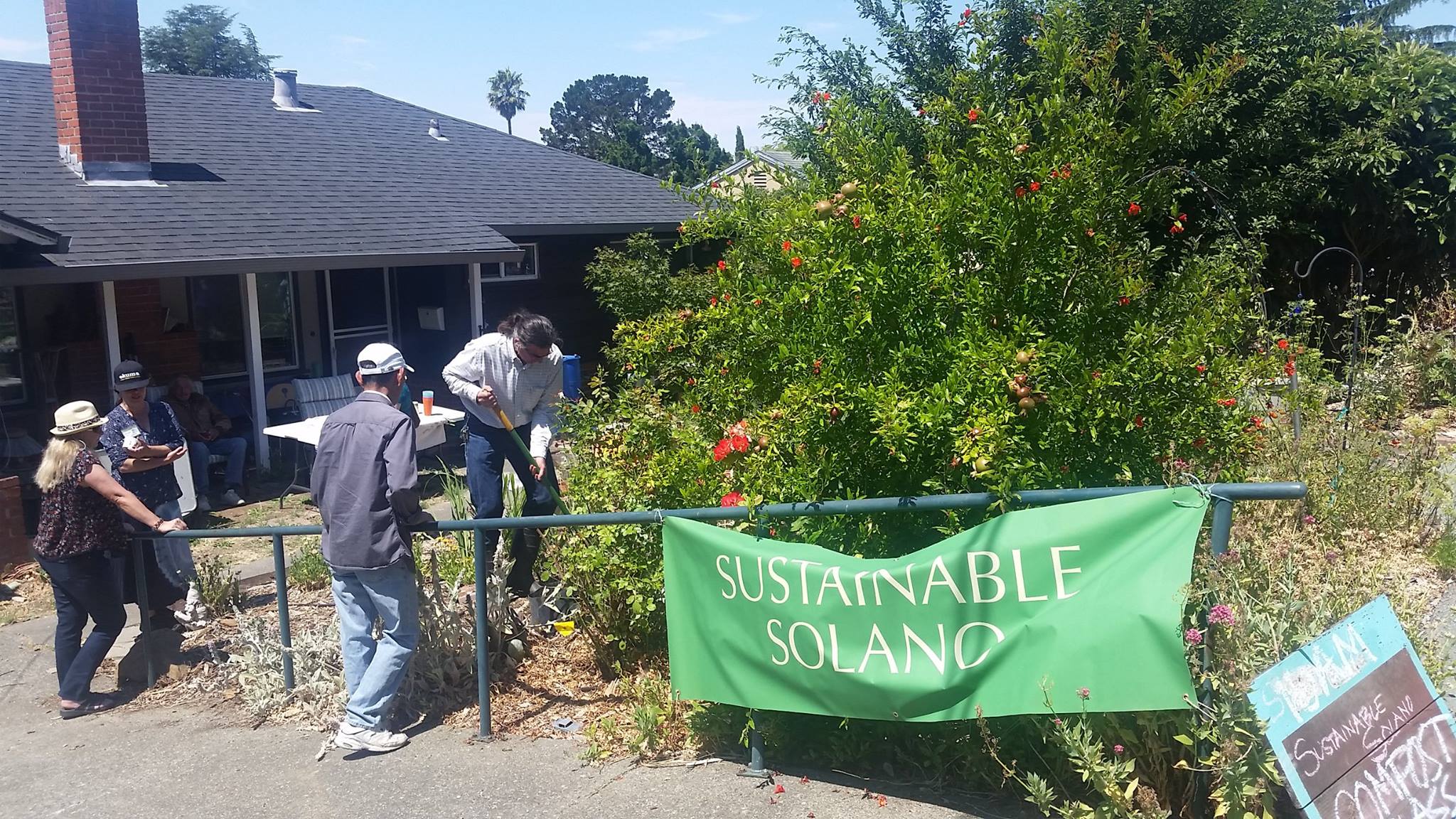
Attendees of our June home composting workshop learned great tips on how to turn yard trimmings and kitchen scraps into rich, healthy soil for their gardens using simple composting methods, including the use of earthworms. The class gathered at one of the beautiful and productive Benicia Demonstration Food Forests where there were plenty of inspiring surrounding examples of the roll that healthy, live soil plays in a flourishing and thriving garden.
The workshop was led by local permaculture and landscape expert, Kathleen Huffman,who helped connect the dots between soil health, plant health, and human health through an informative presentation and hands-on demonstration for creating various types of small composting areas in residential environments. A study of soil conditions at various stages within the garden and solutions to common concerns about space constraints, rodents and foul smells were addressed. Attendees learned directly how to best manage soil health, the easy way, and how healthy soil should look like for best results in the garden.
This workshop is part of Sustainable Solano’s “Healthy Soil, Healthy Planet” educational series offered in partnership with Republic Services. Republic Services will be sponsoring three additional soil workshops this year. The next one is September 9th. Please visit our calendar for details and future dates.
Jul 5, 2017

Water nourishes our landscapes, keeps us hydrated and powers our wind turbines but have you ever wondered where our local water comes from when you turn on your faucet? Our state’s water storage and delivery systems are actually quite complex. Its system of reservoirs, aqueducts, and pumping plants are a result of the California State Water Project (SWP) and allow us to enjoy clean water every day. One of Solano County’s key water suppliers is the Solano County Agency (SCWA), a wholesale water supply agency providing untreated water to cities and agricultural districts in our county. Roughly 83% of Solano County’s water comes from Lake Berryessa with the remaining 17% being diverted from the Sacramento-San Joaquin Delta. Our North Bay Aqueduct pipeline delivers water from Barker Slough in the Delta to Solano agencies, like the SCWA for water supply.
As we reach for the hose and cranked our faucets as things heat up this summer, let us consider the tremendous human efforts and engineering behind the systems that bring us access to these precious drops and continue to embrace wise water use as a daily habit. When you conserve water, you conserve life.
For more information about where your water comes from, visit:

![]()
![]()


 An enthusiastic teen was invited up to assist Chef Lisa in prepping the ingredients for her tasting samples that were later distributed and enjoyed. There was discussion on different leafy green varieties that can also be used to achieve equally delicious pesto sauces like spinach, arugula and even broccoli to name a few. The workshop closed with a quick raffle draw where winners took home some exciting veggie prizes such as a bright yellow spaghetti squash to begin experimenting replacing pasta for a lighter summer meal.
An enthusiastic teen was invited up to assist Chef Lisa in prepping the ingredients for her tasting samples that were later distributed and enjoyed. There was discussion on different leafy green varieties that can also be used to achieve equally delicious pesto sauces like spinach, arugula and even broccoli to name a few. The workshop closed with a quick raffle draw where winners took home some exciting veggie prizes such as a bright yellow spaghetti squash to begin experimenting replacing pasta for a lighter summer meal.

